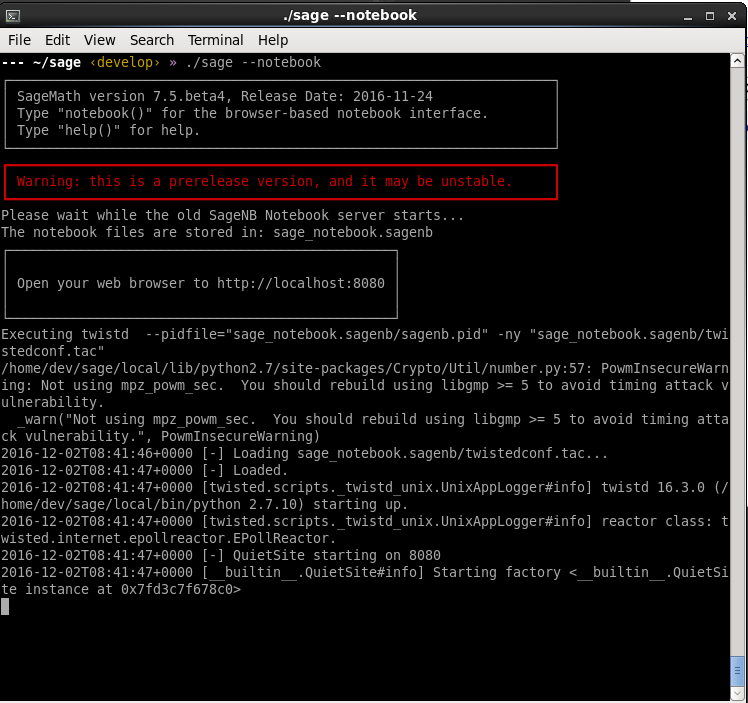Section1.2Running From Source
The SageMath source is hosted here SageMath GitHub. To download and build the source you will need the appropriate development environment set up. This is not detailed here and assumes some familiarity with git and make. Full details can be found here. At a minimum you will need a POSIX compliant shell with GCC, make, perl, and python.
Subsection1.2.1Building SageMath
Once you have a build environment setup then grab the source from the git repository. This may take a few minutes depending on your network speed.
--- ~/dev »git clone git://github.com/sagemath/sage.git Cloning into 'sage'... remote: Counting objects: 448266, done. remote: Compressing objects: 100% (268/268), done. remote: Total 448266 (delta 157), reused 0 (delta 0), pack-reused 447997 Receiving objects: 100% (448266/448266), 152.82 MiB | 11.21 MiB/s, done. Resolving deltas: 100% (341065/341065), done. --- ~/dev »cd sage --- dev/sage ‹master› »git checkout develop Branch develop set up to track remote branch develop from origin. Switched to a new branch 'develop' --- dev/sage ‹develop› »make make build/make/Makefile make[1]: Entering directory `/home/dev/sage' make[1]: `build/make/Makefile' is up to date. make[1]: Leaving directory `/home/dev/sage' build/bin/sage-logger \ "cd build/make && ./install 'all'" logs/install.log *** ALL ENVIRONMENT VARIABLES BEFORE BUILD: *** ... <and so on, and so forth, for quite some time ...> ... Testing that Sage starts... [2016-12-01 14:31:59] SageMath version 7.5.beta4, Release Date: 2016-11-24 Forcing Sage-location, probably because a new package was installed. Updating various hardcoded paths... (Please wait at most a few minutes.) DO NOT INTERRUPT THIS. Done updating paths. Yes, Sage starts. make[2]: Leaving directory `/home/dev/sage/build/make' make[1]: Leaving directory `/home/dev/sage/build/make' real 29m58.528s user 32m33.566s sys 7m0.240s Sage build/upgrade complete! To install small scripts to directly run Sage's versions of GAP, the PARI/GP interpreter, Maxima, or Singular etc. (by typing e.g. just 'gap' or 'gp') into a standard 'bin' directory, start Sage by typing 'sage' (or './sage') and enter something like install_scripts('/usr/local/bin') at the Sage command prompt ('sage:').
Subsection1.2.2Running SageMath Notebook from the command line
--- ~/dev »./sage --notebook


You can now start using this local session equivalently to SageMathCloud sessions with the benefit of gaining the full resources of your local machine and being able to work offline.
Subsection1.2.3Running SageMath From the command line
You can also run SageMath directly from the command line. You may want to do this for quick tests or as part of your development cycle.

